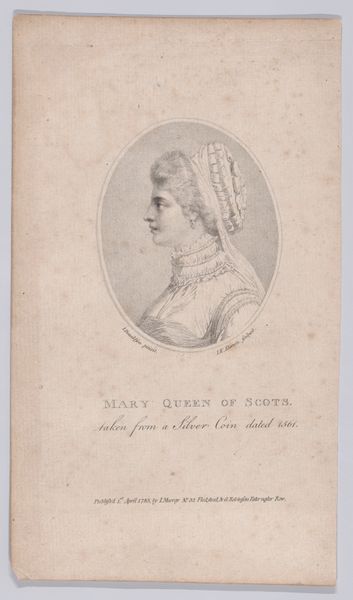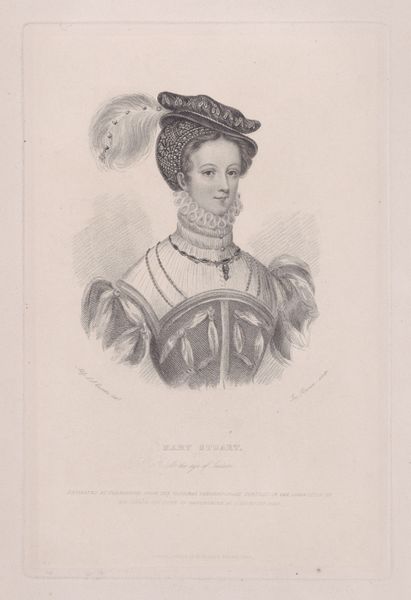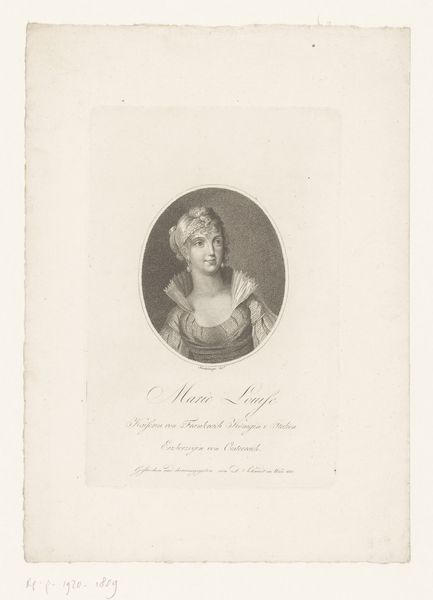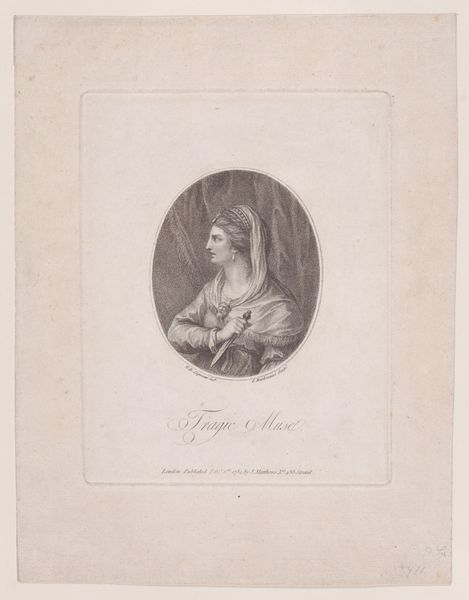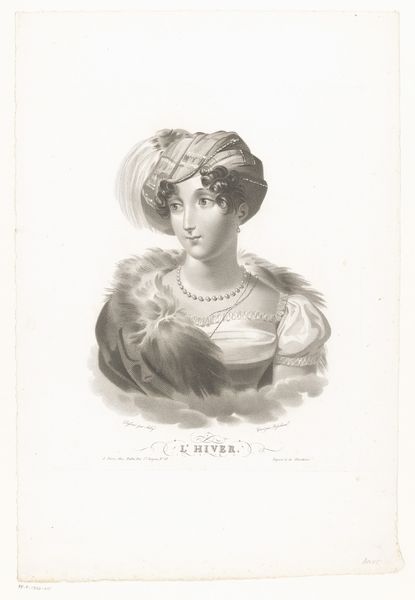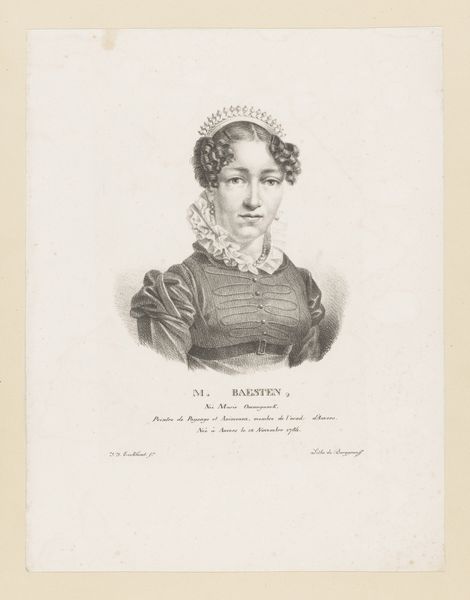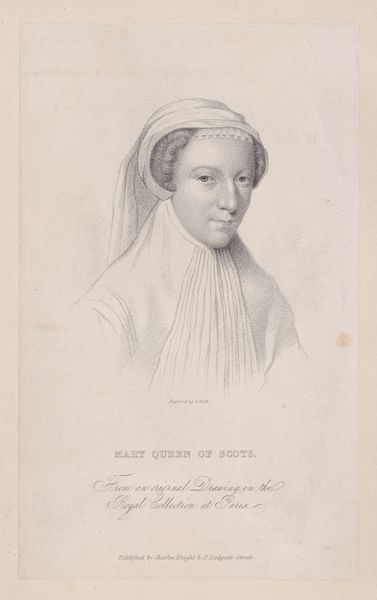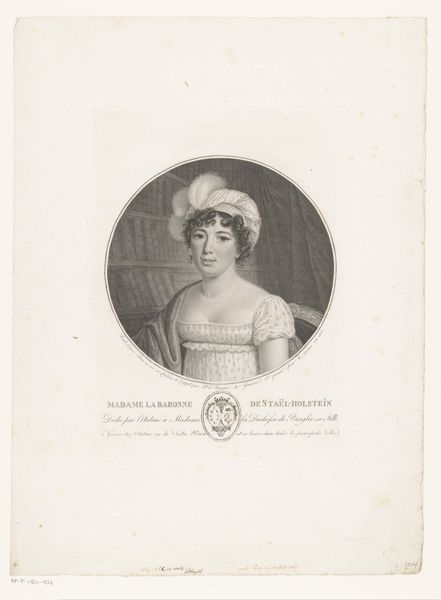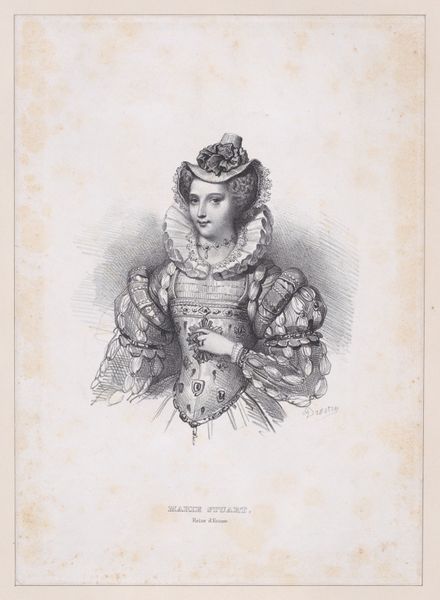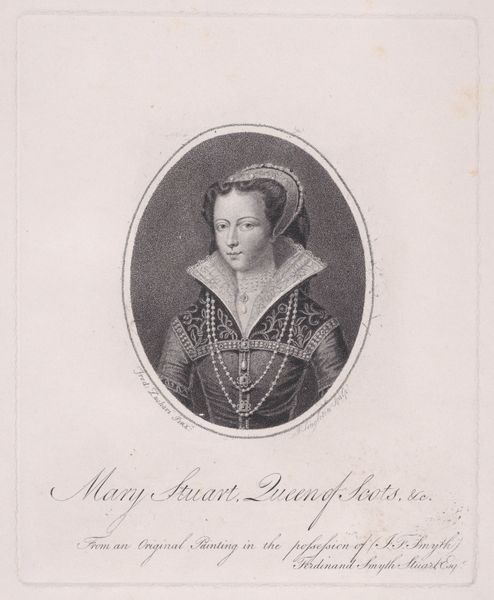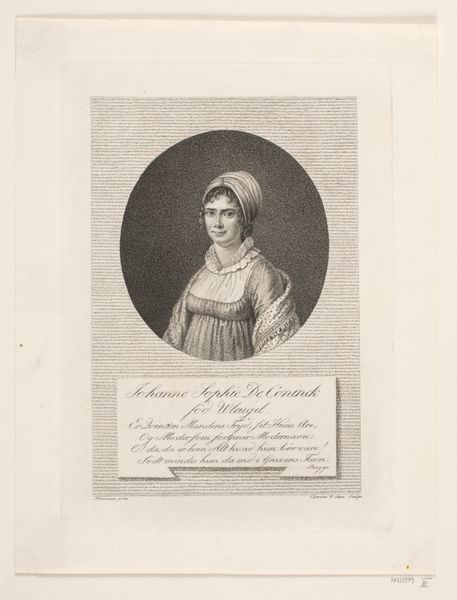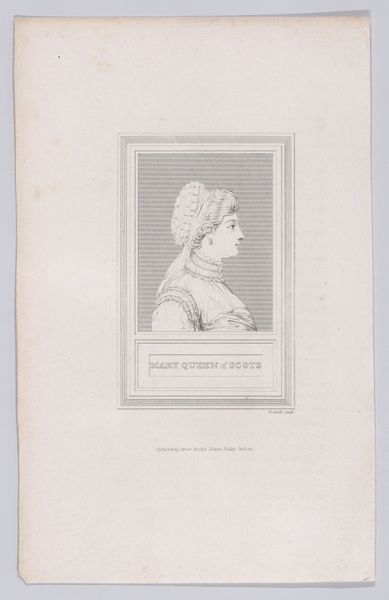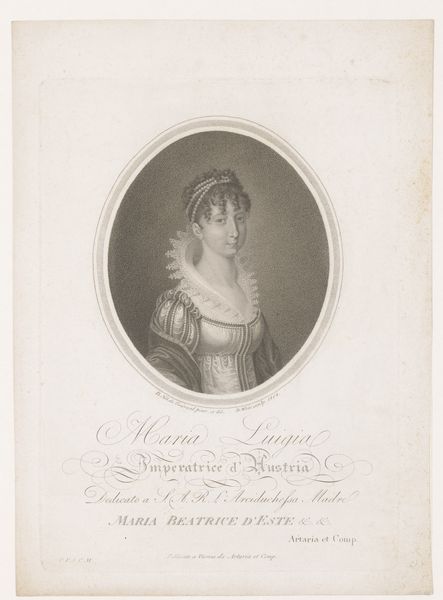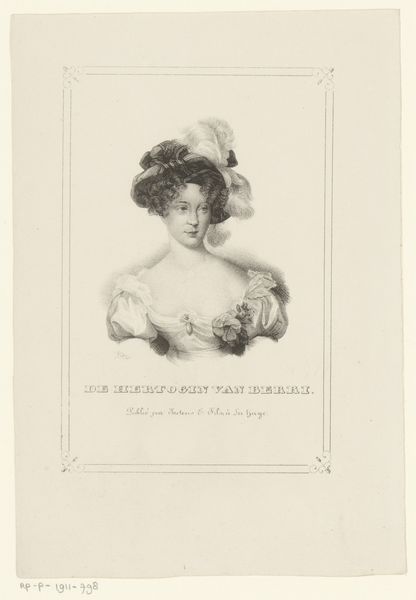
drawing, print, engraving
#
portrait
#
drawing
#
neoclacissism
# print
#
line
#
engraving
#
profile
Dimensions: Plate: 6 7/16 × 4 15/16 in. (16.3 × 12.6 cm) Sheet: 13 3/16 × 10 1/8 in. (33.5 × 25.7 cm)
Copyright: Public Domain
Editor: So, this is an engraving from 1814-1816, entitled *Mary, Queen of Scots*, by Whittingham and Arliss. It presents her in profile within an oval frame. It's interesting how formal and reserved she appears, given her dramatic history. How do you read this portrait? Curator: Well, let's consider the time it was made. This isn't a contemporary portrait but a Neoclassical depiction produced long after Mary's execution. Think about the context: she had become a romanticized figure, a tragic queen. This image is less about historical accuracy and more about constructing a specific narrative for public consumption. What do you notice about the stylistic choices? Editor: It’s very clean and linear. It feels almost… idealized? Not necessarily real. Curator: Exactly. The very medium, engraving, lends itself to that crisp, controlled line, fitting with Neoclassical aesthetics. These prints were often widely distributed. Who do you imagine the audience for this work was? What was its function? Editor: Given its distribution and the fascination with historical figures, perhaps it was designed to reinforce a particular version of Scottish history and monarchy within a broader British context? Something easily reproducible that helped reinforce cultural understanding. Curator: Precisely! Consider how powerful imagery of historical figures could be in shaping public sentiment and national identity. Prints like this weren't simply art objects; they were political tools. It’s worth asking whose interests were being served. Do you see any hints of the sitter's history in the work itself? Editor: Not really. There’s a sadness there, perhaps, but it’s mostly just very… poised. Curator: Which arguably obscures a very messy, complicated past. Editor: Right! It reframes history as a neat and tidy narrative, controlled and distributed through art. Curator: Yes. Analyzing such works through this lens can tell us a lot about the cultural values and power dynamics of the time. Editor: That’s definitely a new way for me to think about portraiture. It’s not just about the individual, but about how the image functions in society.
Comments
No comments
Be the first to comment and join the conversation on the ultimate creative platform.
